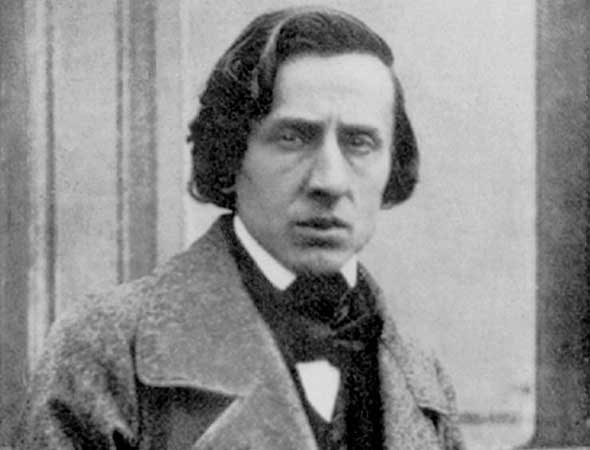CHOPIN: Piano Concerto No. 2
by Jeff Counts
Duration: 30 minutes in three movements.
THE COMPOSER – FRÉDÉRIC CHOPIN (1810–1849) – Like so many of the 18th and 19th Century’s most prominent musicians, Chopin started very young and never got old. It was as if he knew he would only have 39 years on Earth when he performed in public for the first time at the age of 8 and then played for Tsar Alexander I just a short time later. But he was not merely a talented pianist. Chopin’s early compositions received equal attention from the adults in his life and increased his fame throughout Poland. Chopin’s parents enrolled him at the Conservatory when he turned 16, but it soon became clear to everyone that Warsaw was no longer big enough to contain him.

THE HISTORY – Chopin traveled to Berlin in 1828 and made his life-changing Vienna debut in 1829. He returned home quite a bit more famous than when he left and was duly motivated to capitalize on his success with compositions that highlighted his unique keyboard brilliance. He wrote the Second Concerto that very year (1829) and the First Concerto in 1830 (This is no typographical error. Like Beethoven, Chopin’s publication dates often ran counter to his order of creation). A corresponding set of études was written during this same feverish stretch with the intent of making his burgeoning virtuosic language accessible, at least in print, to other pianists. The Second Concerto was premiered (first!) in March of 1830. It was an instant hit, and a second performance was quickly arranged and mounted less than a week later. Chopin had just turned 20 and he was already poised to command the entirety of the piano-speaking world. In fact, the Second Concerto would next serve as the calling card for his Paris debut and critics there observed in Chopin the seeds of a new, rejuvenated era for his instrument. Looking back now at the robust catalogue of music Chopin wrote for solo piano, it requires a rather brief effort to count how many included an orchestral complement. And of that handful, only the two concertos rose to the level of symphonic significance. Writing for orchestras simply didn’t hold his attention, not after that youthful post-Vienna outburst, and his handling of the accompaniment in No. 2 prioritized the understated reserve of a bel canto opera over the more democratic expectations of traditional concerto writing. The Larghetto movement, a favorite of Liszt, was inspired by Konstancja Gładkowska. She was a fellow student at the Conservatory and, though Chopin’s interest in her was never requited (or likely even acted upon), the tribute he made in her honor still ranks among his most gorgeous musical utterances.
THE WORLD – Elsewhere in 1830, William IV became King of England, revolution began in Belgium, Greece became an independent state as part of the London Protocol, and the United States enacted the Indian Removal Act.
THE CONNECTION – Chopin’s Second Pinao Concerto last appeared on a Masterworks program back in 2002. Nelson Friere appeared as soloist and Keith Lockhart conducted.











